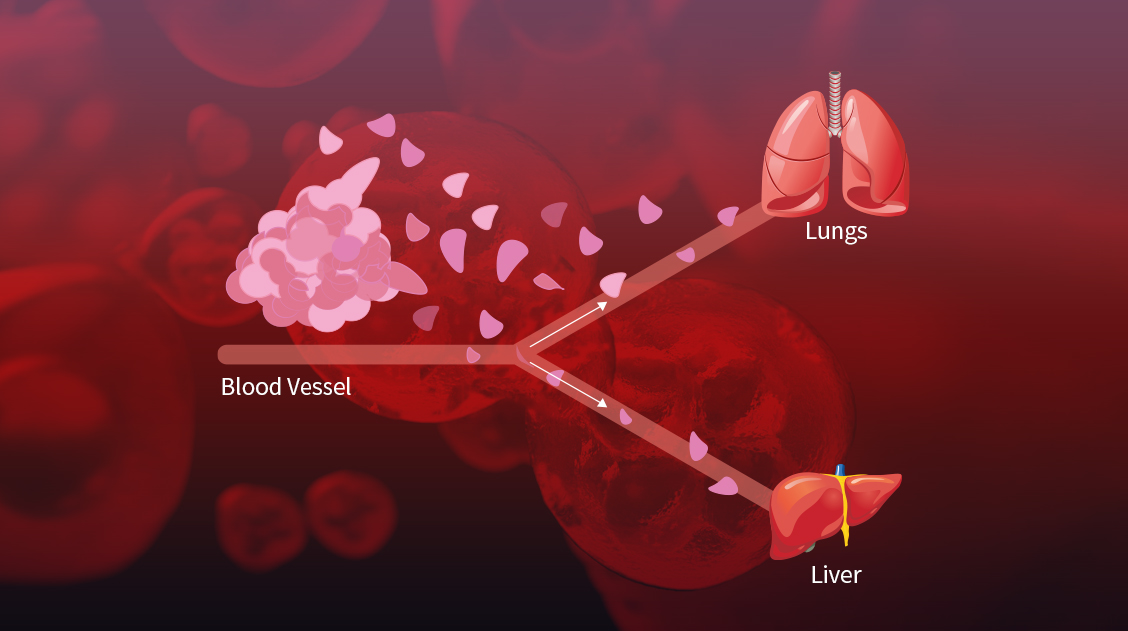
Cancer Cell Migration: New Target Treatments
Preventing cancer cell migration is a fascinating idea in the field of cancer treatment. It’s an incredibly complex field, with new strategies discovered regularly. Targeting cancer cell motility can help stop the spread of the disease and can also reduce the risk of over treatment and dependancy on certain therapies. MDPI is passionate about fresh perspectives on cancer treatment and has many journals that publish life-changing research. I’ll go over some exciting research recently published in the International Journal of Molecular Science.
Metastasis and cell migration
Some researchers have changed their outlook from focusing just on primary cancers to preventing the development of secondary cancers. Secondary cancers develop through metastasis. Metastasis is the spread of cancer cells from their origin to other organs or tissues of the body. It accounts for up to 90% of all deaths in cancer patients. This is an incredibly unsettling fact for secondary cancer patients. And it demonstrates that prevention is the key to a better prognosis.
Researchers at Nagoya City University and the National Institutes of Natural Sciences took on this challenge, in their recent paper in IJMS. They collaborate with other academics and use their previous research to correlate specific proteins with cell migration and metastasis.
What is cell migration?
Cell migration is part of the multistep process of metastasis. It is crucial to cell development and is essential for bioprocesses like cell inflammation and wound healing. Multiple biophysical processes influence this including, cytoskeletal modifications, changes in cellular–substrate adhesive proteins, and alterations in the extracellular matrix.
Cell migration has a key role in the progression of cancer malignancy.
During the inital step of cell migration there is a loss of adhesion between cells. This can be caused by changes in the adhesive proteins. Cancer cells can inflict this change in adhesive proteins via cell modifications. Any changes in the adhesive proteins can result in the cells dissociating from the primary tumour and migrating to other tissues in the body, there, it can encourage further migration.
Preventative treatments
Cancer treatments are usually based on intercepting the unregulated proliferation of cells. Although these treatments can be successful, cancer cells can become multidrug-resistant (MDR) to a range of chemotherapies.
In a study in IJMS, researchers explain that the interactions inside the extracellular matrix are crucial to cell adhesion. They focus on glycoproteins and dystroglycans on the surface of epithelial cells. These interact with the extracellular matrix using their long sugar chains. It’s been demonstrated that changes during the formation of these chains can impair cell adhesion.
The researchers have previously investigated changes in these long sugar chains. And they found a specific post-translational modification caused by glycerol phosphate. Glycerol phosphate interferes with the chain elongation. The shortening of the chain prevents it from communicating effectively with the extracellular matrix. This results in the breakdown of cell adhesion and causes the migration of the cell.
This new study identified an increased expression of glycerol phosphate modifications in cancerous cells. They found a correlation between increased glycerol phosphate modifications and the expression of PCYT2, a CDP-Gro synthase in humans. They conclude that, with further research, PCYT2 could be considered a target for anticancer drugs. Or an alternative approach could be to develop antibody-based therapeutics against cancer specifically targeting glycerophosphate.
Survival rates
The survival rate of cancer in the UK is improving and has doubled in 40 years. This is a similar situation globally, as the National Cancer Institute in the US has projected cancer survival to grow by 24.4% by 2032. In addition, the European Federation of Pharmaceutical Industries and Associations have reported that the 5-year survival rate for metastatic skin cancers has gone up from 5% to 50% in recent years. The Australian institute of health and welfare have identified similar trends as data shows that 70% of all people diagnosed with cancer survive at least 5 years after diagnosis. This is a noticeable increase from 51% of patients 30 years ago.
This global increase in survival rate can be attributed to a variety of reasons, including a better understanding of the disease and improvements in anti-cancer therapies.
Here on the blog we’ve covered subjects like techniques to improve breast cancer survival and also the idea that cancer may not be genetic. MDPI hopes to support this by continuing to encourage innovative submissions in this area.










